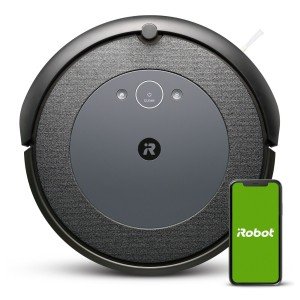The Rise of Robot Vacuum Cleaners in Industrial Settings
In the last few years, the landscape of industrial cleaning has witnessed a substantial change with the introduction of robot vacuum cleaners. These automated gadgets are not just a novelty for homes; they have gained traction in storage facilities, making plants, and other industrial environments. This article explores the functionality, benefits, and factors to consider of robot vacuum within the industrial context, while addressing some frequently asked questions.
What are Robot Vacuum Cleaners?
Robot vacuum cleaners are automated cleaning gadgets equipped with sophisticated sensors and innovation that enable them to browse around areas, discover dirt, and vacuum surfaces without direct human intervention. In industrial settings, they are created to handle a range of particles types, facilitate regular cleaning schedules, and improve overall operational performance.
Table 1: Key Features of Industrial Robot Vacuum Cleaners
| Feature | Description |
|---|---|
| Navigation | Uses LiDAR or camera-based navigation for precise mapping. |
| Size and Design | Compact and robust style to suit tight areas and hold up against tough environments. |
| Self-Charging | Automatically returns to its docking station for recharging. |
| Dustbin Capacity | Larger dustbin fit for industrial debris sizes and volumes. |
| Programming | Can be configured for scheduling and specific cleaning jobs. |
| Information Collecting | Equipped with sensing units to gather data for maintenance and cleaning analysis. |
Advantages of Robot Vacuum Cleaners in Industrial Settings
The adoption of robot vacuum cleaners includes a myriad of advantages:
Increased Efficiency:
- 24/7 Operation: Unlike human cleaners, robots can run around the clock, adding to constant tidiness without downtime.
- Time-Saving: Automated cleaning enables staff members to focus on core jobs rather than cleaning duties.
Expense Savings:
- Labor Costs: Maintaining a robot vacuum can decrease the need for a large cleaning personnel, decreasing total labor expenses.
- Functional Efficiency: With enhanced tidiness and decreased downtime due to upkeep problems, companies can save money on functional costs.
Improved Safety:
- Reduced Risk: By reducing the human participation in harmful cleaning environments, the threat of accidents is lessened.
- Consistent Cleaning: Robot vacuums guarantee that areas are consistently cleaned, decreasing slip risks and unhealthy environments.
Increased Flexibility:
- Customizable Cleaning Routes: These devices can be set to tidy specific locations or floorings, adjusting to altering industrial layouts.
- Variety of Surfaces: Industrial robot vacuums can manage numerous flooring types, from concrete to tiles, making them versatile.
Environmental Impact:
- Sustainable Cleaning Solutions: Many models use very little water and environmentally friendly cleaning services, assisting in business sustainability efforts.
Table 2: Industrial Applications of Robot Vacuum Cleaners
| Industry | Application |
|---|---|
| Manufacturing | Cleaning assembly line and assembly areas. |
| Warehousing | Keeping tidy and organized storage areas. |
| Food Processing | Guaranteeing cleanliness in sensitive areas to fulfill health requirements. |
| Pharmaceuticals | Maintaining ultra-clean environments for production. |
| Logistics and Distribution | Keeping paths clear for efficient operation. |
Difficulties and Considerations
While the benefits are substantial, services must likewise consider a number of challenges:
- Initial Investment: The upfront expenses of buying industrial robot vacuum cleaners can be considerable, though long-term cost savings may offset this expense.
- Repair and maintenance: Regular maintenance is important to keep the robotic systems functioning optimally, and repair work can incur additional costs.
- Integration: Businesses might need to incorporate these devices into existing workflows, which can need time and change.
- Training and Support: Staff may need training to efficiently handle these machines, particularly when repairing or shows is required.
FAQs About Robot Vacuum Cleaners in Industrial Settings
1. How much do industrial robot vacuum cleaners cost?
The expense can range from a few thousand to tens of countless dollars, depending upon requirements, features, and brand name.
2. What kinds of surface areas can they clean?
Robot vacuum appropriate for various surface areas including carpets, tiles, concrete, and even some wood floors.
3. How do they browse complicated industrial environments?
Many industrial robot vacuums use advanced navigation systems like LiDAR, cams, and sensors to map out and adapt to their surroundings for effective cleaning.
4. Can they clean up large areas without human intervention?
Yes, industrial robot vacuums are developed to tidy extensive locations with preset routes and schedules, efficiently operating autonomously.
5. Are these robots eco-friendly?
Numerous models prioritize efficiency and minimize water usage, making them a more environmentally friendly cleaning alternative compared to conventional methods.
The introduction of robot vacuum into industrial environments symbolizes an impressive advancement in cleaning technology. With their capability to improve effectiveness, lower labor costs, and preserve security, these automated systems are paving the way for smarter and cleaner industrial operations. While Recommended Webpage may exist, the long-term advantages and technological advancements are motivating for industries seeking to enhance their cleaning procedures. As innovation continues to develop, we can anticipate more innovations in robot vacuum cleaners that will transform industrial cleaning practices even more.

